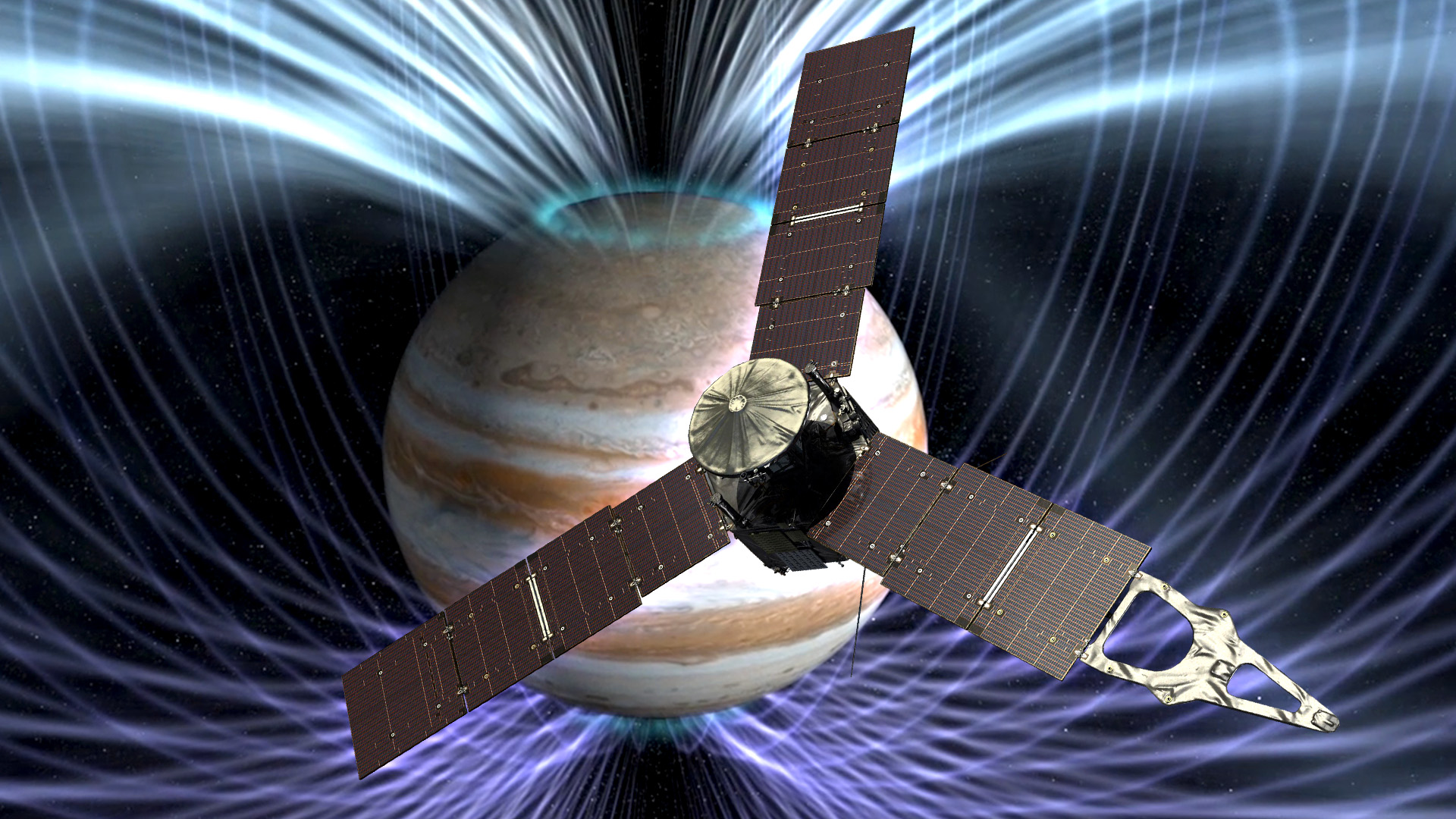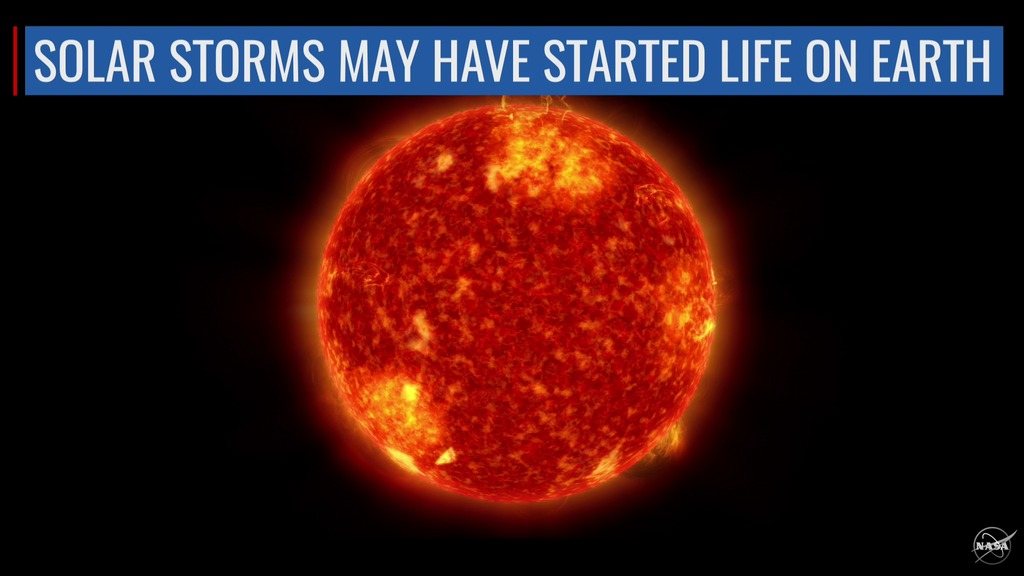The Faint Young Star Paradox: Solar Storms May Have Been Key to Life on Earth
Energy from our young sun – 4 billion years ago -- aided in creating molecules in Earth's atmosphere that allowed it to warm up enough to incubate life.
Complete transcript available.
Watch this video on the NASA Goddard YouTube channel.
Our sun's adolescence was stormy—and new evidence shows that these tempests may have been just the key to seeding life as we know it.
Some 4 billion years ago, the sun shone with only about three-quarters the brightness we see today, but its surface roiled with giant eruptions spewing enormous amounts of solar material and radiation out into space. These powerful solar explosions may have provided the crucial energy needed to warm Earth, despite the sun's faintness. The eruptions also may have furnished the energy needed to turn simple molecules into the complex molecules such as RNA and DNA that were necessary for life.
Understanding what conditions were necessary for life on our planet helps us both trace the origins of life on Earth and guide the search for life on other planets. Until now, however, fully mapping Earth's evolution has been hindered by the simple fact that the young sun wasn't luminous enough to warm Earth.
This newly discovered constant influx of solar particles to early Earth may have done more than just warm the atmosphere, it may also have provided the energy needed to make complex chemicals. In a planet scattered evenly with simple molecules, it takes a huge amount of incoming energy to create the complex molecules such as RNA and DNA that eventually seeded life.
While enough energy appears to be hugely important for a growing planet, too much would also be an issue -- a constant chain of solar eruptions producing showers of particle radiation can be quite detrimental. Such an onslaught of magnetic clouds can rip off a planet's atmosphere if the magnetosphere is too weak. Understanding these kinds of balances help scientists determine what kinds of stars and what kinds of planets could be hospitable for life.

Artist concept of our sun 4 billion years ago.
Credit: NASA/GSFC/CIL

Artist concept of the Earth 4 billion years ago. Credit: NASA/GSFC/CIL

Artist concept of the Earth's weak early magnetosphere being impacted by a coronal mass ejection 4 billion years ago. Credit: NASA/GSFC/CIL
Energy from our young sun – 4 billion years ago -- aided in creating molecules in Earth's atmosphere that allowed it to warm up enough to incubate life. This is a text-only version of the video.
Music credit: Ocean Travel by Laurent Dury from the KillerTracks Catalog.
Complete transcript available.
Watch this video on the NASA Goddard YouTube channel.
Credits
Please give credit for this item to:
NASA's Goddard Space Flight Center
-
Producers
- Genna Duberstein (USRA)
- Joy Ng (USRA)
-
Animators
- Walt Feimer (HTSI)
- Krystofer Kim (USRA)
- Brian Monroe (USRA)
-
Scientist
- Vladimir Airapetian (Sigma Space Corp.)
-
Narrator
- Ryan Fitzgibbons (USRA)
-
Science writer
- Karen Fox (ADNET Systems, Inc.)
Release date
This page was originally published on Monday, May 23, 2016.
This page was last updated on Wednesday, May 3, 2023 at 1:48 PM EDT.
Series
This page can be found in the following series:Tapes
The media on this page originally appeared on the following tapes:-
The Faint Young Star Paradox
(ID: 2015036)
Thursday, May 28, 2015 at 4:00AM
Produced by - Will Duquette (NASA)


